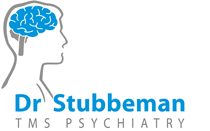
Transcranial magnetic stimulation: a non-invasive neurostimulation
Sam Maddox, Reeves Foundation | August 2, 2016
Copyright© 2016 The Christopher & Dana Reeve Foundation
Transcranial magnetic stimulation (TMS) is a type of non-invasive neurostimulation recently shown to restore function in spinal cord injury (SCI), when combined with stimulation of peripheral nerves.
In a paper that came out a few days ago, “Long-term paired associative stimulation can restore voluntary control over paralyzed muscles in incomplete chronic spinal cord injury patients,” a team from Finland treated two patients with spinal cord injuries with a combination of TMS and peripheral nerve stimulation, applied together repeatedly for nearly six months. According to the research team, this was the first attempt to rehabilitate patients with chronic paralysis using the paired strategy.
During a typical TMS session, an electromagnetic coil is placed against the scalp. The magnet delivers a magnetic pulse that stimulates nerve cells in the brain, painlessly. In this study, one patient was paraplegic, the other a quad with some voluntary hand movement but no ability to grasp. Both were beyond two years post-injury; both had received conventional rehabilitation treatments.
